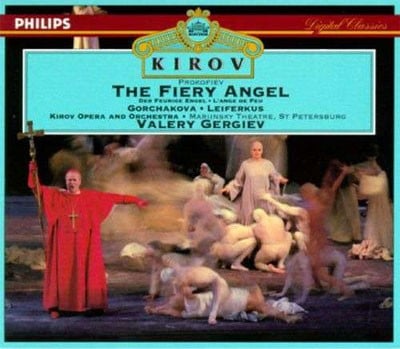The Fiery Angel
op. 37 (1919-23, rev.1926-7)Major roles: dramS,Bar; minor roles: 2M,3T,Bar,B;
small roles: M,T,3B; chorus;
3(II,III=picc).2.corA.2.bcl.3(III=dbn)-4.3.3.1-timp.perc:BD/cyms/t.mil/tam-t/cast/tamb/tgl/bell(off stage)-2harp-strings
Abbreviations (PDF)
Boosey & Hawkes
The Fiery Angel, which occupied Prokofieff during the 1920s, combines aspects of The Gambler and The Love for Three Oranges, most noticeably the themes of obsession and magic respectively, but it inhabits a predominantly darker world, infused with an eroticism that hints at Scriabin. This blackness, unusual for Prokofieff, was partly the result of his interest in the cabalistic sciences, a fascination shared with many members of the Russian symbolist movement, including its central figure Valery Bryusov, author of the novel upon which The Fiery Angel was based. Throughout Prokofieff's stagework it is the psychological ambiguity of Renata, either a pure innocent or a demonic seductress, that drives the drama. Her true nature remains purposely unresolved even in the final convent scene when she is condemned to be burnt at the stake for concourse with the Devil. The role of Renata is vocally and theatrically demanding, and has attracted leading dramatic sopranos including in recent years Galina Gorchakova. Prokofieff's orchestral writing in The Fiery Angel is the most advanced for any of his operas. The composer lavished detailed attention on realising in colouristic terms the feverish intensity of the drama, whether hysterical, passionate or visionary.

Galina Gorchakova/Sergei Leiferkus/Vladimir Ognovenko/Kirov Opera/Valery Gergiev
Philips 446 078-2 (2 CDs)
